ROMAN DANUBIAN LEAD VOTIVE PLAQUE WITH SOL AND HELEN OF TROY 2ND-3RD CENTURY A.D. 4 in. (321 grams total, 10.6 cm including stand). Displaying a figural scene in relief with an arch decorated with egg-and-dart motifs and resting on smooth pillars with foliate capitals; the upper field dominated by Sol wearing a radiate crown with seven rays and driving a facing quadriga, holding a globe and whip in his left hand; the central field showing the Dioscuri on horseback, raising their right arm in salutation of their divine sister Helen of Troy at the centre, the twin on the left, whose horse is trampling a naked prisoner, followed by an armoured warrior holding an oval shield and spear, wearing a crested helmet in pseudo-Attic style, the twin on the left, whose horse is trampling over a big fish, followed by a woman dressed in a long garment and raising her hand in salute; the lower field showing worshippers preparing an offering meal; a coiled serpent to each top corner; mounted on a custom-made display stand. [No Reserve] PROVENANCE: Acquired before 2000. From a Los Angeles collector. with Artemis Gallery, Colorado, USA, 22 September 2016, no.58. Private American collection, New York, USA. Accompanied by an academic report by Dr Raffaele D’Amato. LITERATURE: Cf. Tudor, D., Corpus Monumentorum Religionis Equitum Danuviorum (CMRED), II. The analysis and interpretation of the monuments, Leiden-Brill, 1976, for discussion and iconography; Aimone, M., Byzantine and Sasanian Silver, Enamels and Works of Art, London, 2020. FOOTNOTES: The complex iconography of the plaque relates to the pre-Christian religions of the Lower Danube region. It was concentrated on the figure of Sol Invictus, the sun god, who was often represented driving a quadriga. This cult came from the Near East but spread into the Roman Empire with imperial patronage; symbolism like this was part of the cult of Mithras that was found throughout the empire from Britain (a temple to Mithras can still be seen in the modern City of London) to its eastern coasts in the ancient colonies of Thracia and Dacia, Moesia, Pannonia and Dalmatia. The rest of the plaque shows worshippers (probably the donors of the votive plaque) who are preparing the offering meal, while the riders on horseback, the divine twins Castor and Pollux, evoke the cult of the Danubian rider. Their sister Helen of Troy stands at an altar of Sol like a priestess, representing fertility. As suggested by Aimone, the presence of the two horsemen seems suggest a military context, a connection underlined by the presence of the fully armoured soldier at the left. This iconography was very popular in the Roman Empire and lasted until the 4th century A.D., being also the subject of other artworks, like the fabulous tray in the recently published Wyvern collection (Aimone, 2020, pp.95ff.). CONDITION
ROMAN DANUBIAN LEAD VOTIVE PLAQUE WITH SOL AND HELEN OF TROY 2ND-3RD CENTURY A.D. 4 in. (321 grams total, 10.6 cm including stand). Displaying a figural scene in relief with an arch decorated with egg-and-dart motifs and resting on smooth pillars with foliate capitals; the upper field dominated by Sol wearing a radiate crown with seven rays and driving a facing quadriga, holding a globe and whip in his left hand; the central field showing the Dioscuri on horseback, raising their right arm in salutation of their divine sister Helen of Troy at the centre, the twin on the left, whose horse is trampling a naked prisoner, followed by an armoured warrior holding an oval shield and spear, wearing a crested helmet in pseudo-Attic style, the twin on the left, whose horse is trampling over a big fish, followed by a woman dressed in a long garment and raising her hand in salute; the lower field showing worshippers preparing an offering meal; a coiled serpent to each top corner; mounted on a custom-made display stand. [No Reserve] PROVENANCE: Acquired before 2000. From a Los Angeles collector. with Artemis Gallery, Colorado, USA, 22 September 2016, no.58. Private American collection, New York, USA. Accompanied by an academic report by Dr Raffaele D’Amato. LITERATURE: Cf. Tudor, D., Corpus Monumentorum Religionis Equitum Danuviorum (CMRED), II. The analysis and interpretation of the monuments, Leiden-Brill, 1976, for discussion and iconography; Aimone, M., Byzantine and Sasanian Silver, Enamels and Works of Art, London, 2020. FOOTNOTES: The complex iconography of the plaque relates to the pre-Christian religions of the Lower Danube region. It was concentrated on the figure of Sol Invictus, the sun god, who was often represented driving a quadriga. This cult came from the Near East but spread into the Roman Empire with imperial patronage; symbolism like this was part of the cult of Mithras that was found throughout the empire from Britain (a temple to Mithras can still be seen in the modern City of London) to its eastern coasts in the ancient colonies of Thracia and Dacia, Moesia, Pannonia and Dalmatia. The rest of the plaque shows worshippers (probably the donors of the votive plaque) who are preparing the offering meal, while the riders on horseback, the divine twins Castor and Pollux, evoke the cult of the Danubian rider. Their sister Helen of Troy stands at an altar of Sol like a priestess, representing fertility. As suggested by Aimone, the presence of the two horsemen seems suggest a military context, a connection underlined by the presence of the fully armoured soldier at the left. This iconography was very popular in the Roman Empire and lasted until the 4th century A.D., being also the subject of other artworks, like the fabulous tray in the recently published Wyvern collection (Aimone, 2020, pp.95ff.). CONDITION
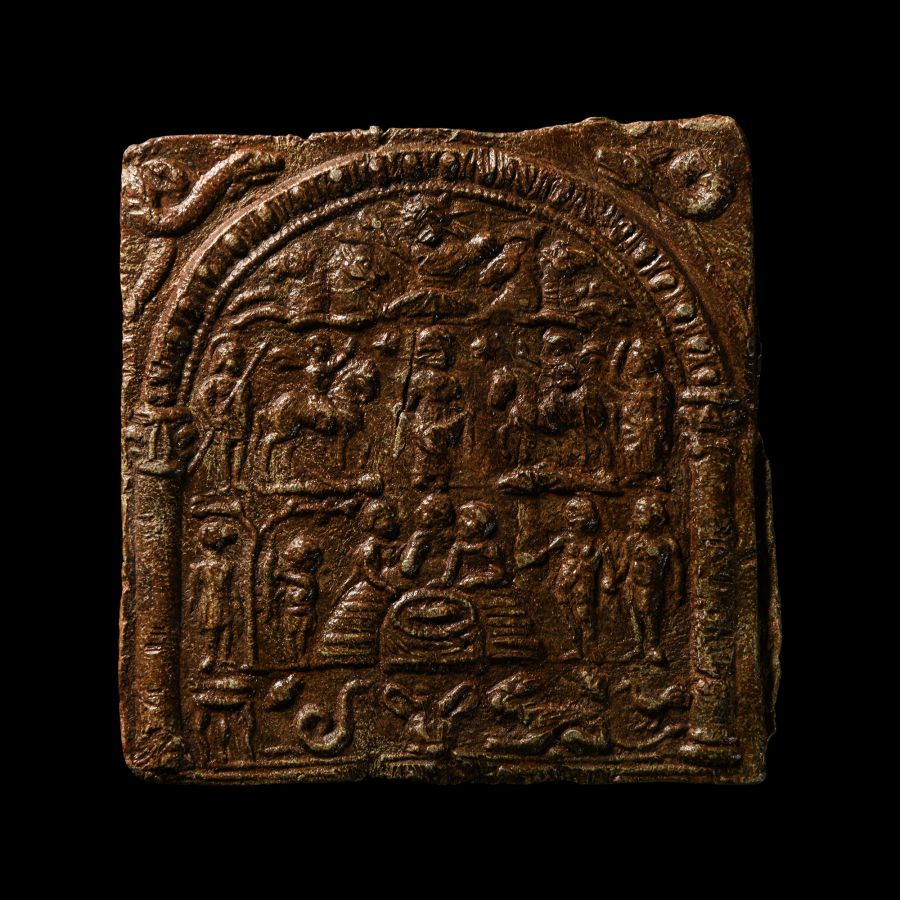
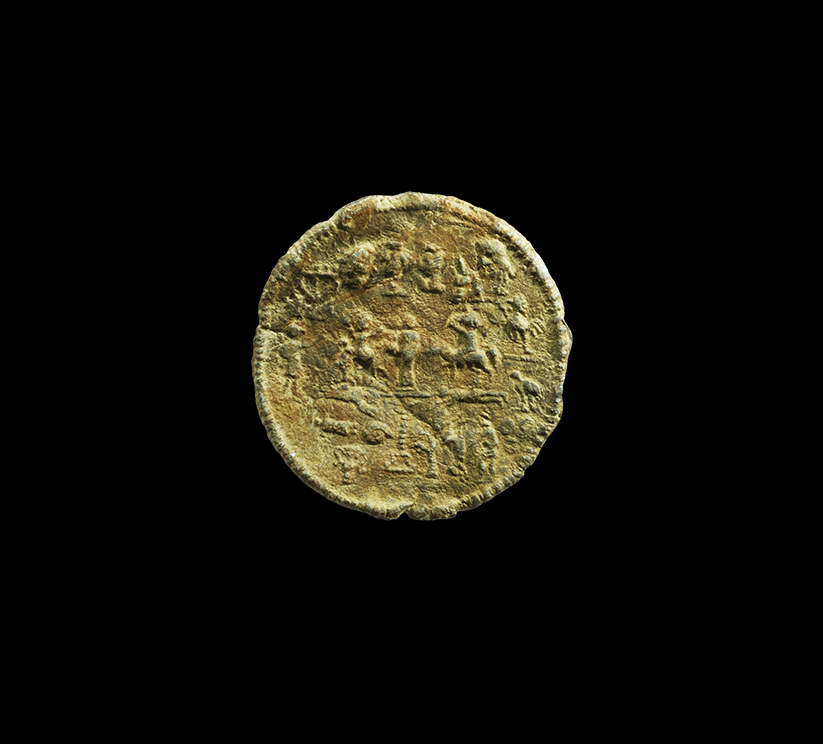

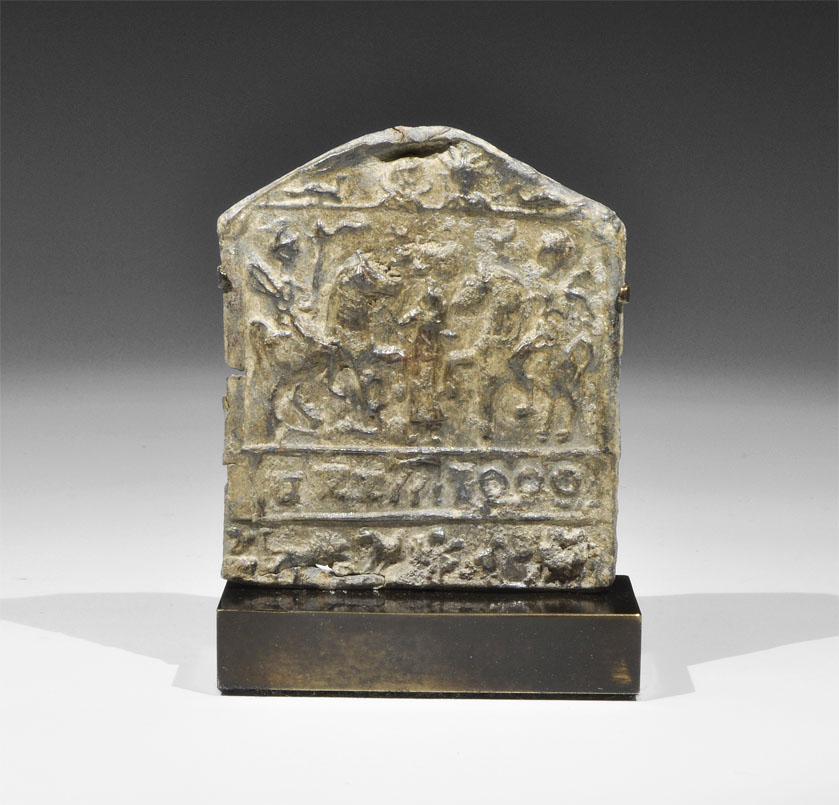
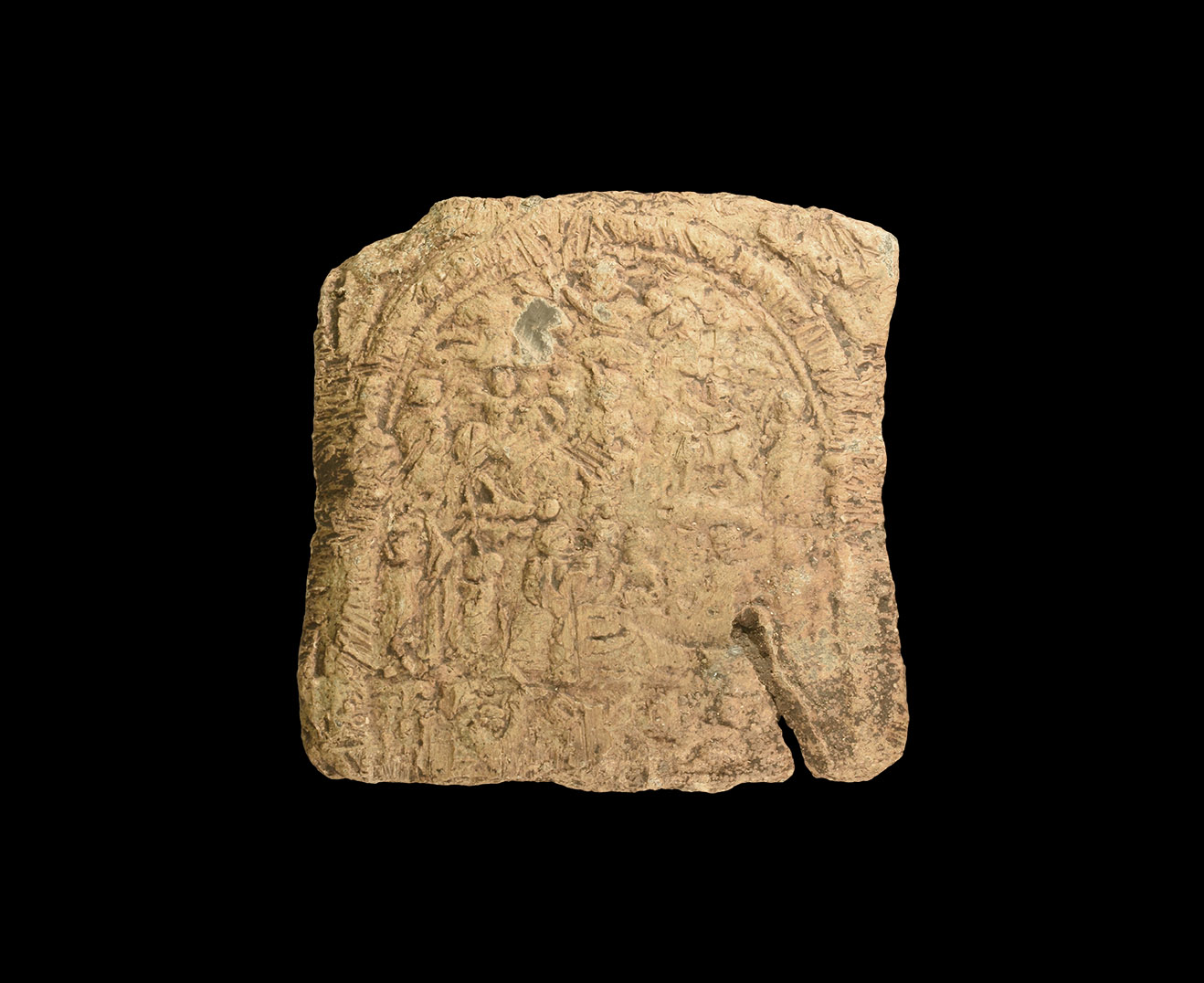
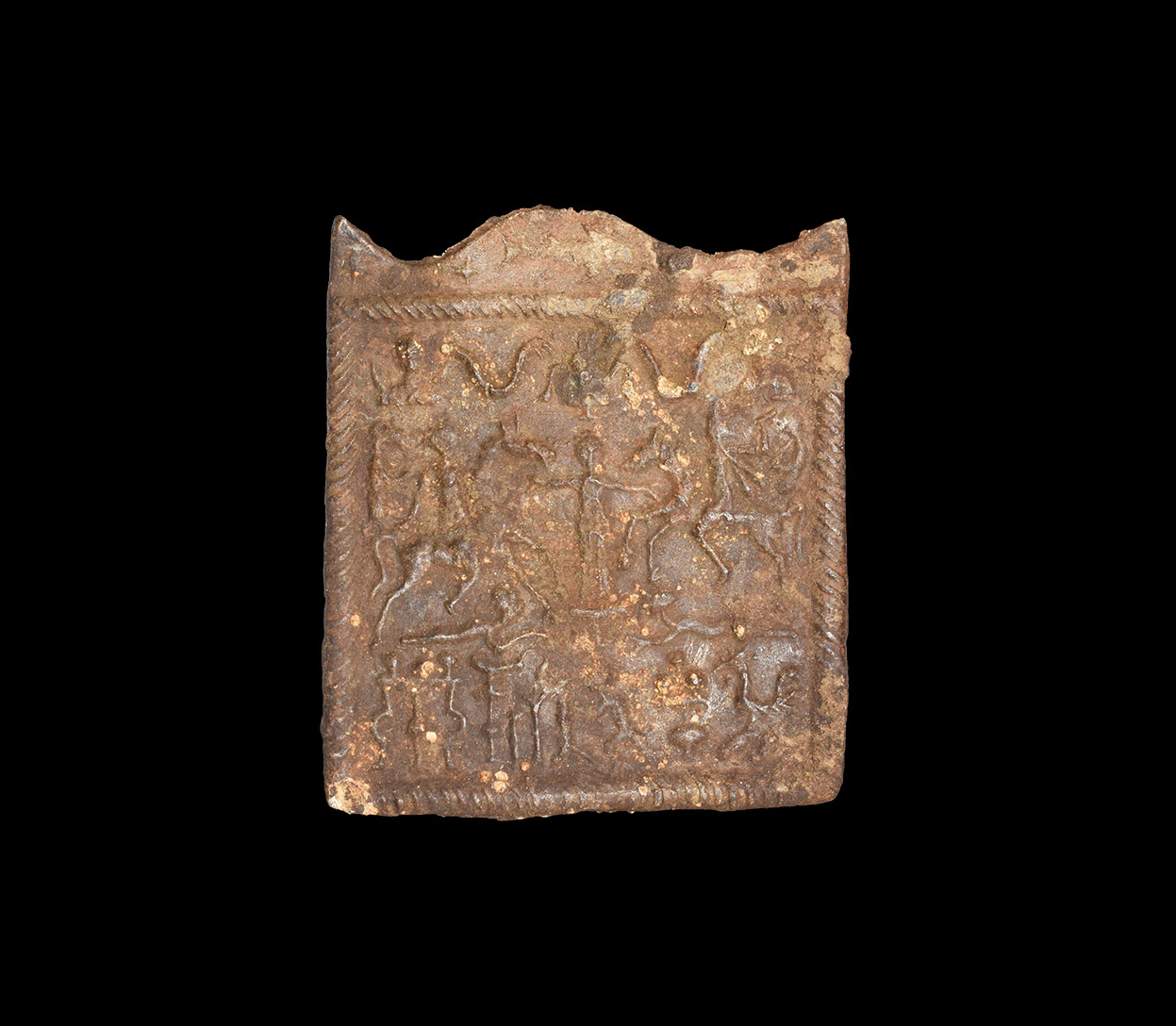





Try LotSearch and its premium features for 7 days - without any costs!
Be notified automatically about new items in upcoming auctions.
Create an alert